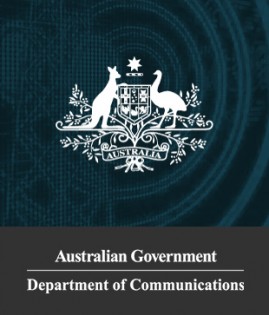Contact us
First Floor, 159 Victoria Pde
Collingwood, VIC 3066
(Google Map)
1300 727 952
or
+61 3 9910 4099
Continuous design, continuous improvement
Salsa Digital worked with a Victorian Government department to create user-centric designs informed by our user research and testing. The final designs were a product of three-way collaboration and used a continuous design and improvement cycle, feeding in client input and user research. This delivers benefits to the Victorian Government, citizens, tax-payers and vendors like Salsa.
The players
Our client is a branch/department within one of the larger Victorian Government departments, offering a range of services to other agencies across the state. (Note: Due to a strict media/communications policy, unfortunately we can’t name this department.)
The problem
Our client’s services were buried in its parent department’s website and many agencies were unaware of the branch and the services it offered. The client needed a new website to help promote its services across the Victorian State Government.
The solution
While the client was looking for a vendor through a formal Request for Proposal, the Department of Premier and Cabinet’s (DPC’s) whole-of-government digital platform project, Single Digital Presence (SDP), was in full swing. Our client decided to use the SDP offering, including the template designs in the SDP Atomic Pattern Library as the basis for its new website.
Salsa used an iterative human-centred design (HCD) approach to define the key user groups and their needs. We then worked with the client’s team and the user groups to co-design, test and validate solutions. Salsa also approached the DPC’s SDP team to understand its approach to user research, testing and information architecture (IA). Our intent was to use similar methods so that results could be packaged and easily shared in a familiar format. For example, Salsa discovered the SDP team was using Treejack for IA testing so we used the same IA tree testing software.
The site development coincided with the final development stages of the SDP alpha release, which provided Salsa with a unique opportunity to liaise with the SDP design and product team to share our research findings and the unique use cases. The SDP team was keen to learn from our user research, design iterations, IA choices and workflow and we met regularly to pass on feedback about the SDP designs and key insights. Likewise the SDP team gave advice and direction for the application of particular models. During these discussions it became increasingly obvious that new use cases, and thus additional components, would need to be adaptable to a wide set of uses by multiple agencies.
Salsa was particularly interested in the cyclic sharing of learnings and the ‘familiar packaging’ of these research learnings and feedback because we had been researching global best practice in open design. (Our strong interest and vision for an “open design” community was reflected in our submission to the PMC’s Open Government National Action Plan for 2020 (read more here).
The goal is to create an open design community that shares research, design assets and works collaboratively to develop dynamic, continuously improving solutions for real human needs. Open design aims to create a rich body of knowledge and ideas. In the case of DPC’s SDP it would provide a rich set of solutions that DPC can choose from, test against citizen groups and service needs and, if approved by the DPC governance layers, add to the SDP Atomic Pattern Library as components that are available to other government agencies.
One of the most exciting aspects of the open design model is that resources normally required for ‘re-inventing the wheel’ can be put into thorough citizen research and needs analysis, to improve the citizen experience. This continuous design continuous improvement model is reflected in the current Atomic Pattern Library. Furthermore the open design community is open to the wider community so that non-government organisations and universities can draw on the library for their projects and upload contributions.
Three-way collaboration
During the website development, Salsa created a three-way collaboration model that enabled iterative design and development in a shared, cloud-based environment (see diagram 1 below).
The Salsa design team uploaded the SDP Alpha Site iteration Sketch file to Abstract, which is a cloud-based hosting platform for Sketch (Sketch is a common user experience (UX)/user interface (UI) design software). This enabled various stakeholders to view, edit and commit Sketch file design iterations. Abstract allows ‘branching’ of a version of a master file that needs approval by the project lead before that branch is ‘committed’ to the master file.
The Salsa design team created a ‘Sandbox’ branch, which we used to try out various design solutions for sharing, collaborative input and iterative testing before we committed any of these files to our client master file.
The great thing about Abstract is that you can have multiple designers/design teams working on the same set of designs. The Sandbox structure allows for continuous, citizen-centric design and continuous improvement, with ideas being shared and viewed three ways between Salsa, DPC’s SDP and our client. In this type of model any new use cases/UI elements approved by the SDP team can be easily added to the SDP Atomic Pattern Library master file.
The HCD approach
The HCD approach to iterative IA and design development during this stage included:
- Understanding the user and their needs
-
Empathy mapping and persona development — What are the key user group types? What are their typical experiences and expectations?
-
Needs analysis — What are the key needs for each user group?
-
Journey mapping — What are the customer groups’ interaction journeys with the service? What are the key touchpoints?
-
Service innovation and new use cases — What unique interactions are required for each user group?
-
- Understanding the best interaction patterns for those users
-
Low-fi prototyping — A quick visual mock-up of the design. These can often be in Sketch and are used to discuss and collaborate around a design direction.
-
Information architecture branching development — Designing the information layout and the order and priority of information.
-
Tree testing — Users are presented with menus and asked to use the menus to navigate through a series of tasks.
-
AB testing — A randomised test with two variants of the same design. Users are given the option to choose their preferred design to complete a certain task.
-
- Real-life validation and refinement
-
High-fidelity clickable prototyping built on Invision prototype sharing software — This is a close-to-real-life representation of the design and how it would operate once published.
-
Face-to-face user interviews — Users are often presented the high-fidelity clickable prototype in these interviews and asked to complete a series of tasks. Their interaction is observed.
-
User testing, validation and gap analysis — A user’s ease of interaction and chosen pathways to complete tasks are observed and validated. If navigation difficulty and gaps are recorded, or if there are consistent errors or opportunities for improvement, these findings are fed back into an improved design and experience. Feedback is captured on a continued basis and further iterations and updates of the design are carried out in future releases.
-
The benefits
The Department of Premier and Cabinet’s groundbreaking Single Digital Presence delivers many benefits to Victorian citizens and agencies. Salsa was thrilled to have the opportunity to work with our client and contribute to SDP, while exploring new models of collaborative research, design and development.
There are several beneficiaries for this level of innovation:
-
The agency — Reduced risk, increased consistency, and reduced costs and time required to deliver a great citizen experience.
-
The citizen — Recipient of a great digital service, with information that’s easy, intuitive and fast to find.
-
The taxpayer — Reduced costs through smarter, faster and better delivery of digital services.
-
The vendor (such as Salsa) — Ability to leverage, collaborate and contribute to an open design library of ‘proven’ and validated design patterns to lower the barrier to better user digital experiences. This also enables the vendor to focus an agency’s budget on taking the user experience to greater levels, rather than spending it on development that already exists.
SDP also benefits — it will continue to grow through supplying more agencies, uncovering more use cases and unique user needs that will result in continuous design and continuous improvement. It’s validated continuously by user research and testing in a variety of applications. The greater the number of agencies and services catered for, the more diverse the SDP Atomic Pattern Library will become — ultimately resulting in more personalised and intuitive government services.
Some key benefits from this collaborative approach include:
- Increased knowledge sharing/collaboration across agencies
- Reduced costs across the Victorian Government through design re-use
- Components informed by user testing to maximise the citizen experience
- More time and resource investment capability to solve real citizen needs
In the spirit of open design Salsa welcomes any interested party to download our continuous design continuous improvement model and we welcome any enquiries.
Why Salsa Digital?
Salsa Digital secured the site build based on our strong response to the RFQ and our proven track record. Our intimate knowledge of the SDP project and environment also provided another incentive for the client to contract our services.
About Salsa Digital
We’re a highly specialised, enterprise-grade digital agency focused on open source for social good and innovation. We’re committed to the open everything movement (OpenX) and to the many benefits this ethos provides including transparency, innovation, and sharing and improving problems and patterns solved by the pioneers before us.
The open source movement has played a key role in the evolution of Salsa. Over the years, as technology and practices have developed, this commitment to open source has grown to encompass a much broader base beyond open source content management systems (open CMS — open data, open platform and open design). We contribute and deliver services in all these areas, with a strong involvement in specific open source initiatives such as Drupal, Wordpress, GovCMS, Single Digital Presence, Kubernetes/Lagoon and CKAN.


